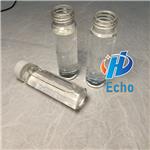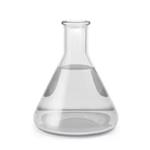- (E)-1,2-Dichloroethene
-

- $10.00/ kg
-
2024-04-23
- CAS:156-60-5
- Min. Order: 1kg
- Purity: 99.7%
- Supply Ability: 200000kg
- 1.2-dichloroethylene
-

- $23.00/ kg
-
2024-03-15
- CAS:156-60-5
- Min. Order: 500kg
- Purity: 99.9
- Supply Ability: 200ton
|
| | TRANS-1,2-DICHLOROETHYLENE Basic information |
| Product Name: | TRANS-1,2-DICHLOROETHYLENE | | Synonyms: | 1,2-dichloroethylene,(transisomers);1,2-dichloroethylene,(E)-;1,2-dichloro-ethylen;1,2-dichloro-,(E)-Ethene;1,2-Dichlorethentrans-;(E)-CHCl=CHCl;(E)-1,2-Dichlorethylen;(E)-1,2-Dichlorethen | | CAS: | 156-60-5 | | MF: | C2H2Cl2 | | MW: | 96.94 | | EINECS: | 205-860-2 | | Product Categories: | Organics;Analytical Chemistry;Standard Solution of Volatile Organic Compounds for Water & Soil Analysis;Standard Solutions (VOC);Alpha Sort;D;DAlphabetic;DIA - DIC;Volatiles/ Semivolatiles | | Mol File: | 156-60-5.mol |  |
| | TRANS-1,2-DICHLOROETHYLENE Chemical Properties |
| Melting point | −57 °C(lit.) | | Boiling point | 48-60 °C(lit.) | | density | 1.257 g/mL at 25 °C(lit.) | | vapor pressure | 5.32 psi ( 20 °C) | | refractive index | n20/D 1.447(lit.) | | Fp | 43 °F | | storage temp. | Refrigerator | | solubility | Miscible with acetone, ethanol, and ether and very soluble in benzene and chloroform (U.S. EPA,
1985) | | form | Liquid | | color | Clear colorless | | explosive limit | 12.8% | | Water Solubility | Miscible with ethanol, ethyl ether, acetone, benzene and chloroform. Immiscible with water. | | Merck | 14,92 | | BRN | 1420761 | | Henry's Law Constant | 10.12 at 30 °C (headspace-GC, Sanz et al., 1997) | | Exposure limits | OSHA PEL: TWA 200 ppm (790 mg/m3); ACGIH TLV:
TWA 200 ppm (adopted). | | Dielectric constant | 2.27 | | Stability: | Incompatible with oxidizing agents, bases. Stable, but may decompose on exposure to air, moisture or light. Highly flammable. | | LogP | 2.06 | | CAS DataBase Reference | 156-60-5(CAS DataBase Reference) | | EPA Substance Registry System | trans-1,2-Dichloroethylene (156-60-5) |
| | TRANS-1,2-DICHLOROETHYLENE Usage And Synthesis |
| Chemical Properties | 1,2-Dichloroethylene exists in three isomers,
sym-, cis-60% and trans-40%. There are variations in toxicity between these two forms. At room temperature, these
chemicals are colorless liquids with a slightly acrid, ethereal odor. The Odor Threshold in air is 17 ppm.
sym-isomer: | | Chemical Properties | colourless liquid | | Physical properties | Colorless, viscous liquid with a sweet, pleasant odor. Odor threshold concentration is 17 ppm
(quoted, Amoore and Hautala, 1983). | | Uses | trans-1,2-Dichloroethylene is used in the preparation of solvents and in chemical mixtures. It also acts as a synthetic agent and active constituent of perfumes. Further, it is used for electronics cleaning, precision cleaning and metal cleaning activities. | | Uses | trans-1,2-Dichloroethylene may be used as an analytical reference standard for the determination of the analyte in water samples by gas chromatography (GC) based analytical techniques. | | Uses | Solvent for fats, phenol, camphor, etc. Intermediate in synthesis of chlorinated solvents and compounds. | | Definition | ChEBI: 1,2-dichloroethene is a member of chloroethenes. | | General Description | Clear colorless liquid with a pleasant odor. Flash point 43°F. | | Air & Water Reactions | Highly flammable. Oxidizes in air to form unstable peroxides that may explode spontaneously. Insoluble in water. | | Reactivity Profile | 1,2-DICHLOROETHYLENE reacts with alkalis, difluoromethylene, dihypofluorite, and nitrogen tetraoxide. Contact with solid alkalis or their concentrated solutions will cause formation of chloroacetylene, which ignites in air. Avoid contact with copper and copper alloys. Corrosive to metals unless an inhibitor has been added. Oxidation in the presence of concentrated sulfuric acid or a free radical initiator gives chloroacetyl chloride via epoxide intermediates. Incompatible with organic peroxides . | | Fire Hazard | TRANS-1,2-DICHLOROETHYLENE is flammable. | | Flammability and Explosibility | Flammable | | Safety Profile | Moderately toxic by ingestion. Mddly toxic by inhalation. Human systemic effects by inhalation: sleep, hallucinations, and distorted perceptions. Experimental reproductive effects. A skin and eye irritant. Mutation data reported. Exposure to high vapor concentration can cause nausea, vomiting, weakness, tremor, and cramps. Recovery is usually prompt following removal from exposure. Dermatitis may result from defatting action on skin. Dangerous fire hazard when exposed to heat, flame, or oxidtzers. Moderate explosion hazard in the form of vapor when exposed to flame. Violent reaction with difluoromethylene dihypofluorite. Forms shock-sensitive explosive mixtures with dinitrogen tetraoxide. Reaction with solid caustic alkahes or their concentrated solutions produces chloracetylene gas that ignites spontaneously in air. Reacts violently with N2O4, KOH, Na, NaOH. Moderate explosion hazard in the form of vapor when exposed to flame. Can react vigorously with oxidizing materials. To fight fire, use water spray, foam, CO2, dry chemical. When heated to decomposition it emits toxic fumes of Cl-. See also CHLORIDES; CHLORINATED HYDROCARBONS, ALIPHATIC; and ACETYLENE COMPOUNDS. | | Potential Exposure | Primary irritant (w/o allergic reaction).
1,2-Dichloroethylene is used as a solvent for waxes, resins,
and acetylcellulose. It is also used in the extraction of rubber, as a refrigerant; in the manufacture of pharmaceuticals
and artificial pearls; and in the extraction of oils and fats
from fish and meat. | | Environmental fate | Soil. In a methanogenic aquifer material, trans-1,2-dichloroethylene biodegraded to vinyl
chloride (Wilson et al., 1986). Under anoxic conditions trans-1,2-dichloroethylene, when
subjected to indigenous microbes in uncontaminated sediments, degraded to vinyl chloride
(Barrio-Lage et al., 1986). trans-1,2-Dichloroethylene showed slow to moderate degradation
concomitant with the rate of volatilization in a static-culture flask-screening test (settled domestic
wastewater inoculum) conducted at 25 °C. At concentrations of 5 and 10 mg/L, percent losses
after 4 wk of incubation were 95 and 93, respectively. The amount lost due to volatilization was
26 to 33% after 10 d (Tabak et al., 1981).
Biological. Heukelekian and Rand (1955) reported a 10-d BOD value of 0.05 g/g which is 7.6%
of the ThOD value of 0.66 g/g.
Photolytic. Carbon monoxide, formic and hydrochloric acids were reported to be photooxidation
products (Gay et al., 1976). | | Shipping | UN1150 Dichloroethylene, Hazard Class: 3;
Labels: 3-Flammable liquid. | | Purification Methods | Dry it with MgSO4, and fractionally distil it under CO2. Fractional crystallisation at low temperatures has also been used. [Beilstein 1 IV 709.] | | Incompatibilities | May form explosive mixture with air.
Attacks some plastics, rubber, and coatings. Incompatible
with oxidizers (chlorates, nitrates, peroxides, permanganates, perchlorates, chlorine, bromine, fluorine, etc.);
contact may cause fires or explosions. Keep away from
alkaline materials, strong bases, strong acids, oxoacids, and
epoxides. Gradual decomposition results in hydrochloric
acid formation in the presence of ultraviolet light or upon
contact with hot metal or other hot surfaces. Reacts with
strong bases; potassium hydroxide; difluoromethylene,
dihypofluoride, nitrogen tetroxide (explosive); or copper
(and its alloys) producing toxic chloroacetylene which is
spontaneously flammable on contact with air. Attacks some
plastics and coatings. | | Waste Disposal | Incineration, preferably after
mixing with another combustible fuel. Care must be exercised to assure complete combustion to prevent the formation of phosgene. An acid scrubber is necessary to remove
the halo acids produced. Consult with environmental
regulatory agencies for guidance on acceptable disposal
practices. Generators of waste containing this contaminant
(≧100 kg/mo) must conform with EPA regulations governing storage, transportation, treatment, and waste disposal. |
| | TRANS-1,2-DICHLOROETHYLENE Preparation Products And Raw materials |
|